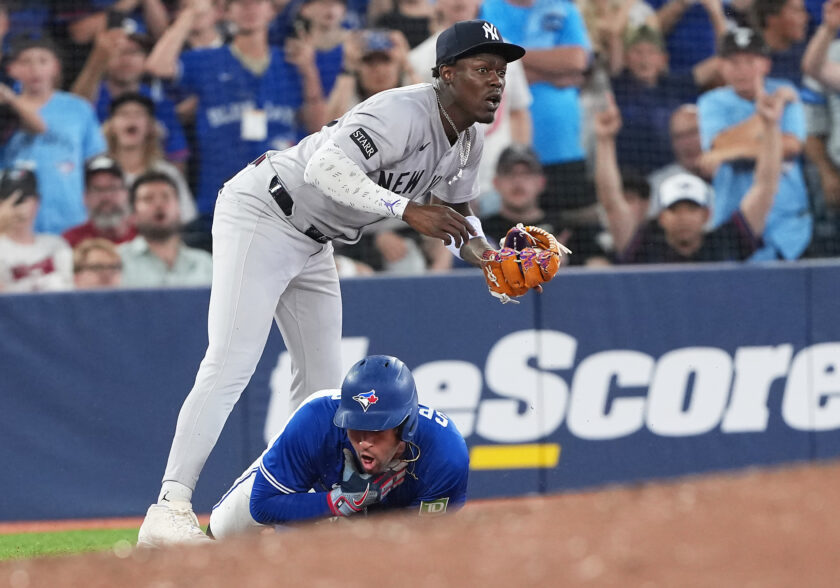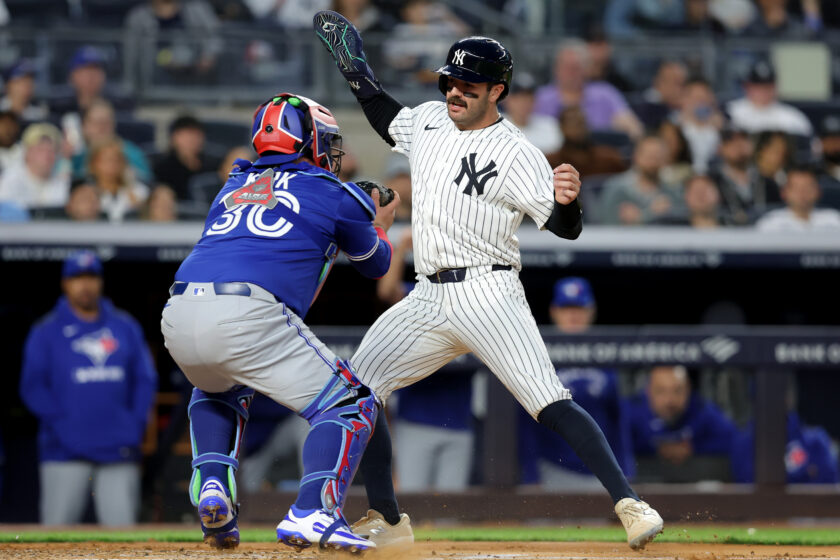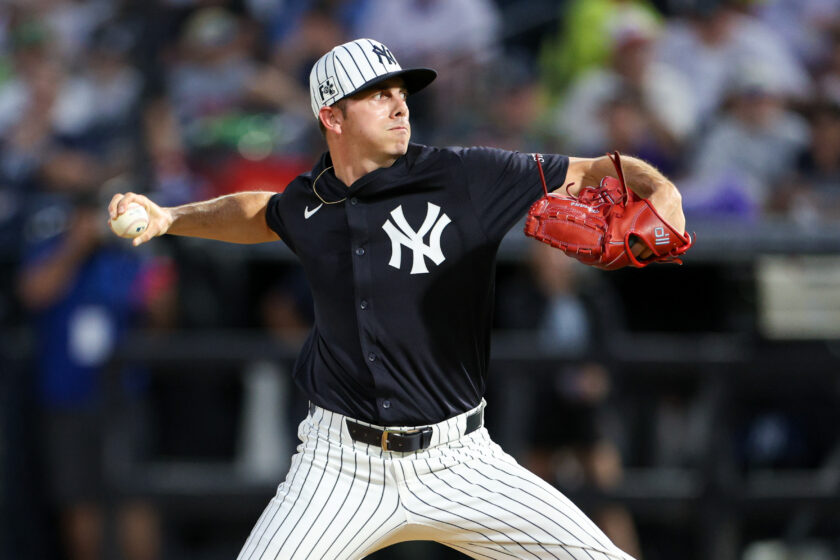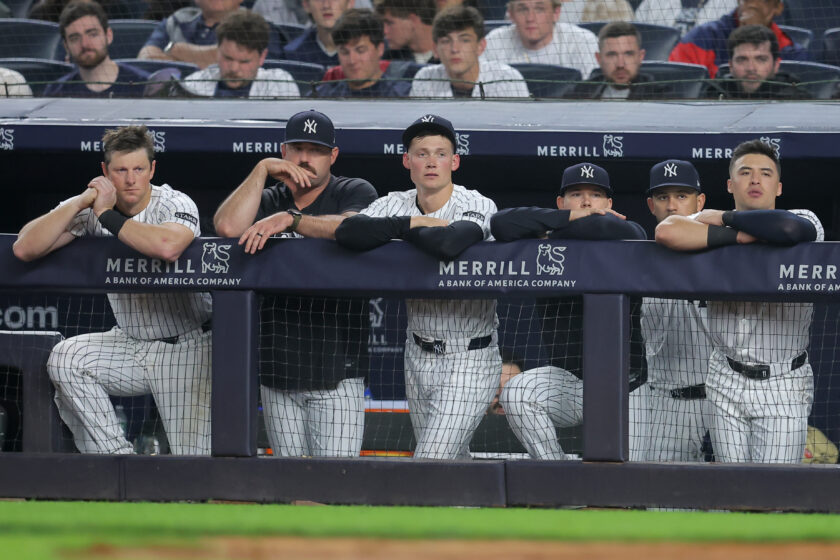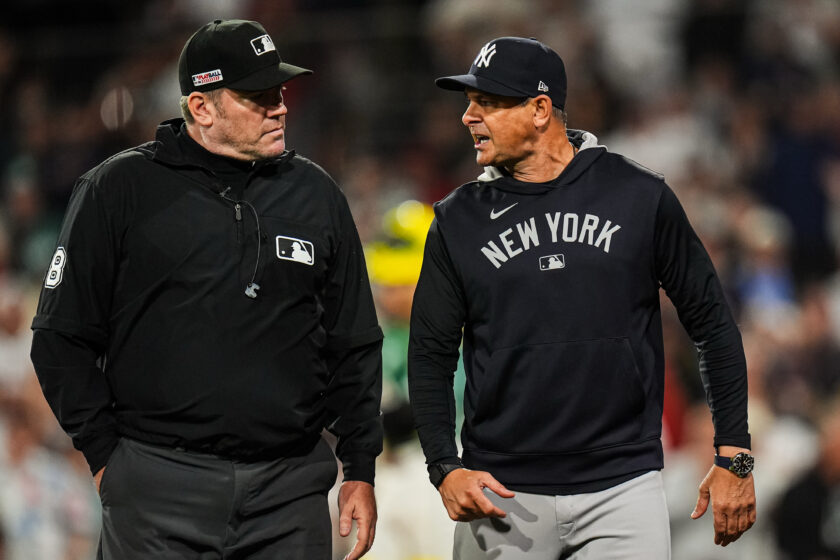New York Yankees: 5 numbers that need to be un-retired
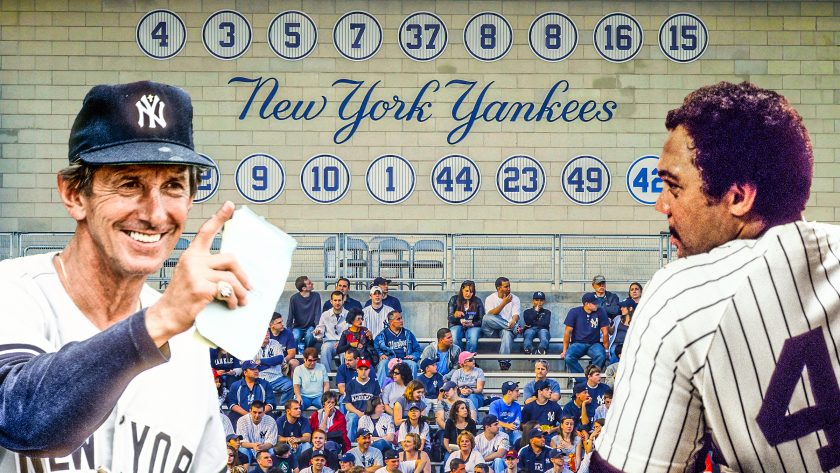
The New York Yankees have a plethora of numbers worth being retired. They also have some needing un-retiring.
[sc name=”Josh Benjamin Banner”]Playing for the New York Yankees isn’t just playing baseball for any old team. It really is something special. The pinstripes are not just a uniform, but a badge of honor. If players perform well enough in the friendly confines of Yankee Stadium, they may have their numbers retired.
And boy, have the Yankees retired plenty of numbers. No, seriously. The team gives out retired numbers with Oprah-like enthusiasm. You made history with the team but were otherwise average? Don’t care! You get a retired number! Had one truly great season in a decade-plus in pinstripes? Into Monument Park you go!
The Yankees have retired so many numbers, some future players may have to resort to wearing fractions. Maybe numbers with decimal points will become a thing. Either way, for all the Yankees legends who deserved to have their number retired, a few snuck through when they shouldn’t have.
Fortunately, just so the team doesn’t run out of numbers, here are some that can and should be un-retired. You know, just in case!
[sc name=”Yankees Title” text=”No. 5: Roger Maris” ]
Before we get into Roger Maris and everyone else on this list, I need to be perfectly clear. Saying these players’ number should be retired is not in any way indicative of who they were as Yankees. Only that their accomplishments and overall careers were not worthy of a recognition usually reserved for Hall of Famers, trailblazers, game-changers, etc.
Thus, we start with Maris, a man whose powerful lefty swing showed promise when he first arrived in New York in 1960. Batting in front of future Hall-of-Famer Mickey Mantle, Maris donned number 9 and led the AL in RBI his first year as a Yankee.
Though Mantle had an AL-best 40 home runs to Maris’s 39 and was already one of baseball’s most feared hitters, Maris was named MVP. The following year, he broke Babe Ruth‘s single-season record, crushing 61 homers en route to another MVP before slugging 33 with 100 RBI in 1962.
[sc name=”Yankees Center”]Maris hit .269 with 133 home runs and 353 RBI in that time. He played four more years with the Yankees but never saw the same success. He only had 70 home runs and 194 RBI the rest of the way before two uneventful years with the St. Louis Cardinals. Still, the Yankees chose to retire his number 9 in 1984.
Maris is definitely a memorable Yankee, but here’s the problem. Unlike Mantle, he wasn’t a once-in-a-generation talent. His seven All-Star selections are inflated because he played in an era when two All-Star Games took place each year. He is not even close to being a Hall of Famer.
When push comes to shove, his number was retired for two, maybe three good seasons in pinstripes. Retiring his number was equivalent to handing out a participation trophy, so it’s time to take back number 9.
[sc name=”Yankees Title” text=”No. 4: Billy Martin” ]
This one is really tough and for multiple reasons. Martin came up with the Yankees as a scrappy infielder in 1950 and spent six-plus years in New York before being traded. However, he is best known for his five different tenures as the team’s manager.
That said, though Billy Martin can be credited with ushering the Yankees back to greatness in the 1970s, he didn’t do enough to warrant his number 1 being retired. During his five tenures, the first of which began in 1975 and the last in 1988, he won just two AL Pennants and one World Series.
By comparison, Joe Torre‘s managerial tenure began in 1996 and didn’t end until 2007. He also won four World Series rings in five years, plus two more AL Pennants. He was a featured player and deserved to see his number 6 retired, whereas Martin was more of a recurring character in the award-winning TV show that is the New York Yankees.
Not to downplay how passionate a manager he was, but he isn’t quite number-retiring material.
[sc name=”Yankees Title” text=”No. 3: Phil Rizzuto” ]
Phil Rizzuto had an excellent career as a Yankee. He spent 13 years as an excellent defensive shortstop. He took home the AL MVP trophy in 1950. The man played on seven World Series–winning teams and became a beloved broadcaster after he retired.
The man known as “Scooter” also got inducted into the Hall of Fame in 1994, so he definitely deserved to have his number 10 retired, right?
Wrong. I love Scooter, and his broadcasts were a big reason I started watching Yankee games on the regular. But from a numbers standpoint, he isn’t anything special. FanGraphs lists his career defensive WAR at an eye-popping 207.9, compared to an offensive WAR of -24.6.
Yes, Rizzuto played in an era when small ball was valued more. He hit .324 in his MVP season. Still, his greatest offensive accomplishment was leading the majors in sacrifice bunts four years in a row. All in all, it seems like his number was retired just because he was universally beloved and less for what he did on the field.
I’m sorry, but being worn by an incredibly nice guy and an overall above-average player does not make a number worthy of retirement.
[sc name=”Yankees Title” text=”No. 2: Ron Guidry” ]
In 1978, Ron Guidry became a household name. The lanky lefty known as “Louisiana Lightning” was unstoppable on the mound, going 25-3 with an unbelievable 1.74 ERA. Naturally, he won the AL Cy Young and also his second World Series ring that year.
Guidry’s number 49 was retired in 2003, and I still don’t know why. This is a puzzle not even Will Hunting could solve, and he probably wouldn’t even want to since he’s a Red Sox fan. Guidry led the AL in ERA the following season but never recaptured the same dominance of ’78. He is not a Hall of Famer, and his career numbers don’t even warrant consideration for Cooperstown.
Don’t get me wrong. Guidry was a popular Yankee, but so was an even better overall player in Paul O’Neill. If his number 21 isn’t retired, then neither should Guidry’s 49 be.
[sc name=”Yankees Title” text=”No. 1: Reggie Jackson” ]
I’m often asked two questions, one after the other. Which players are on my all-time Yankees team, and how do I determine who makes the cut? My criteria are simple. They must not just be a great overall player, but they need to have spent a minimum of five full years in pinstripes.
Well, Reggie Jackson spent exactly five years with the Yankees and hit .281 with 144 home runs during his Bronx tenure. He made the All-Star Game in each of those seasons and won two World Series rings, even winning World Series MVP in 1977. Sure enough, in 1993, his number 44 was retired.
Except, while Jackson was an iconic Yankee, he represented more the new free agency era than he did what it meant to be part of the team; 1993 also happens to be when he was inducted into the Hall of Fame, and he chose to wear a Yankees cap.
[sc name=”Elite Access”]The reality of the matter is Jackson put up a majority of his Hall-of-Fame numbers with the Kansas City/Oakland Athletics. He won three World Series rings out west, along with the 1973 AL MVP trophy. Thus, why did he go into Cooperstown as a Yankee?
Well, in a 2001 interview, Jackson explained his choice. He was all set to sport an Oakland cap on his plaque. While serving as Oakland’s hitting coach in 1991, he was abruptly fired. He then chose New York.
I’m sorry, but just because someone wears your team’s cap upon entering the Hall of Fame isn’t a reason to immortalize them. No disrespect to Mr. October, but he isn’t an iconic Yankee. Rather, he’s a Hall-of-Fame player who just happened to spend five good years in New York, and had a few iconic moments sprinkled throughout.
[sc name=”Yankees Link Next” link=”https://elitesportsny.com/2018/10/01/new-york-yankees-reflections-on-25-years-of-fandom/” text=”Reflecting On 25 Years Of Yankees Fandom” ] [sc name=”Yankees Footer”]Josh Benjamin has been a staff writer at ESNY since 2018. He has had opinions about everything, especially the Yankees and Knicks. He co-hosts the “Bleacher Creatures” podcast and is always looking for new pieces of sports history to uncover, usually with a Yankee Tavern chicken parm sub in hand.

